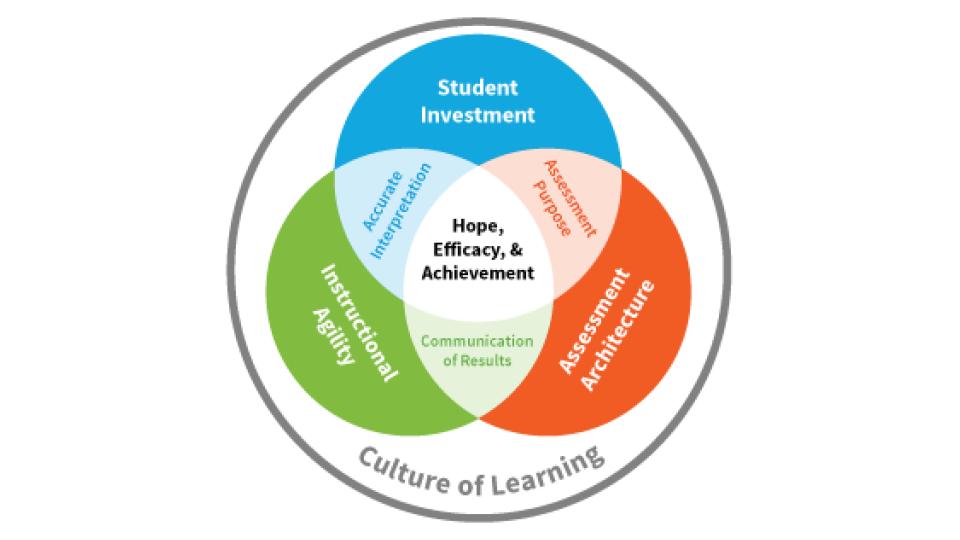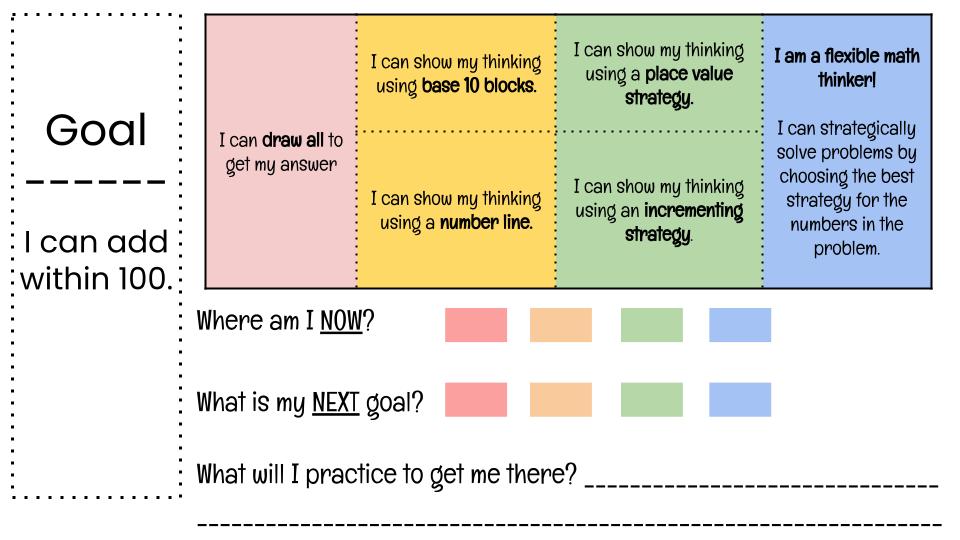“Whether we plan it or not, culture will happen. Why not create the culture we want?”
—Carmine Gallo, The Storyteller’s Secret
Have you ever started a new book and just . . . lost interest? Have you ever started a book and found yourself so enthralled that you could hardly put it down? Each school year, educators have the opportunity to write a new story—and the beginning of that story is critical. No matter the setting (face-to-face, virtual, blended), many educators begin with a similar focus: creating a culture of learning. Time dedicated to this work varies. Some educators feel the pressure of beginning content and spend minimal time focused on culture. Some believe the work of culture never truly ends. Regardless of where you fall on this spectrum, do you know the impact your assessment practices have on the culture you are trying to create?
Could assessment be a tool to build, strengthen, or revive your classroom culture all year long?
In their 2017 book Essential Assessment: Six Tenets for Bringing Hope, Efficacy, and Achievement to the Classroom, Erkens, Schimmer, and Dimich suggest that the impact of assessment on classroom culture is significant: “An authentic culture of learning goes far beyond just personal relationships and collegiality” (p. 7).
Building relationships, both student to teacher and student to student, is an essential part of creating a positive culture, but that work does not end when content work begins. The Essential Assessment authors reiterate the importance of strong relationships, but they offer an additional, and often underutilized, avenue: “We use our assessment practices to build relationships” (p. 7).
Before beginning this phase in my continued journey of improving my own assessment literacy, I saw culture and assessment as two opposing forces. I now have a better understanding that every assessment communicates to students what I believe about learning—and what I believe about them as learners. Our best efforts to create strong and lasting relationships with our students can be unintentionally undermined when we are not intentional with our assessment practices.
The framework of the six assessment tenets offers a deeper look into how assessment shapes our culture of learning.
As shown in the framework visual, the tenets are interconnected and centered on building hope, efficacy, and achievement for all learners. Let’s consider an example of how the tenet of assessment architecture can help build and strengthen classroom culture.
Assessment that contradicts a culture of learning
Without work in assessment architecture, assessment is often an afterthought. This could look like teaching a unit and then creating an assessment or printing the end-of-unit assessment from the textbook or resource. Early in my career, I spent many late nights preparing assessments to be given the following day. I can vividly remember the frustration—after weeks of instruction—of seeing scores that showed lack of student understanding. I can still feel the heaviness of overwhelming hopelessness over where to begin reteaching. This was quickly followed by the realization that I did not even know when reteaching could occur, because I had to begin the next unit of instruction to keep up with expected pacing. Not only did I feel defeated as a teacher, but I can only imagine what many of my students must have felt when I returned their graded assessments. Assessment as an afterthought was completely contradicting the culture of learning I had been working so hard to create.
Assessment that cultivates a culture of learning
Assessment is most effective when it is planned, purposeful, and intentionally sequenced in advance of instruction by all those responsible for delivery. Assessment architecture is a blueprint that tightly sequences essential standards, teases out learning targets, identifies the assessments that reflect learning targets, and determines the use of assessments. (Erkens et al., 2017, p. 5)
Before beginning the unit on addition and subtraction within 100 last year, the second-grade team at my school worked to unpack their essential standard (Common Core State Standard 2.NBT.B.5: “Fluently add and subtract within 100 using strategies based on place value, properties of operations, and/or the relationship between addition and subtraction”). As a result of that work, the team created a progression of addition strategies that would help them not only to determine proficiency for the unit, but also to inform their continued intervention and extension instruction on this essential standard throughout the year. The team created common assessments and were intentional with the timing for their common formative assessments so that they would have time to respond when students needed more support. Early in the unit, they showed students a sampling of student strategies and asked them to see how the strategies were the same and different. The strategies were examples of the progression the teachers created during the unpacking. To their surprise, each classroom had groups of students that sorted the strategies by sophistication; this led to the cocreation of a student-friendly learning progression, which they named their “Addition Learning Line.” The image below is the product of that work.
The teachers planned to use this learning line to conference with students after their first common formative assessment on addition, but to their surprise, it became a daily formative assessment tool. Students were excited to share that they had tried a “yellow strategy” or that they were working to “get to blue.” Intervention efforts throughout the unit were targeted based on where students currently were on the learning line. When it was time for the end-of-unit assessment, the teachers already had a clear picture of where each student was and what students would need to continue working toward proficiency. This year, the same team has already revisited their unpacking work for this essential standard and has begun discussing possible improvements. This is just one example of the power of assessment architecture to cultivate a culture of learning. A clear understanding of the standard created a pathway to achievement that fostered hope and strengthened efficacy for the students—and the team.
While the intent of that example was to highlight the tenet of assessment architecture, the interconnectedness of the other five tenets can be seen as well. Can you imagine how this work in assessment architecture impacted the communication of results? Did you see evidence of student investment? Do you think the teachers felt a stronger sense of instructional agility? Can you feel the culture of learning?
As you are writing the story of your year, how will you use assessment to create the culture you want?
For more information on the six assessment tenets and a deep dive into the tenets, including research, examples, and advice for putting them into practice, visit allthingsassessment.info/assessment-tenets
Erkens, C., Schimmer, T., and Dimich, N. (2017). Essential Assessment: Six Tenets for Bringing Hope, Efficacy, and Achievement to the Classroom. Solution Tree Press.
Special thanks to the second-grade team at Fairview Elementary in Rogers, Arkansas, for sharing their Addition Learning Line.



